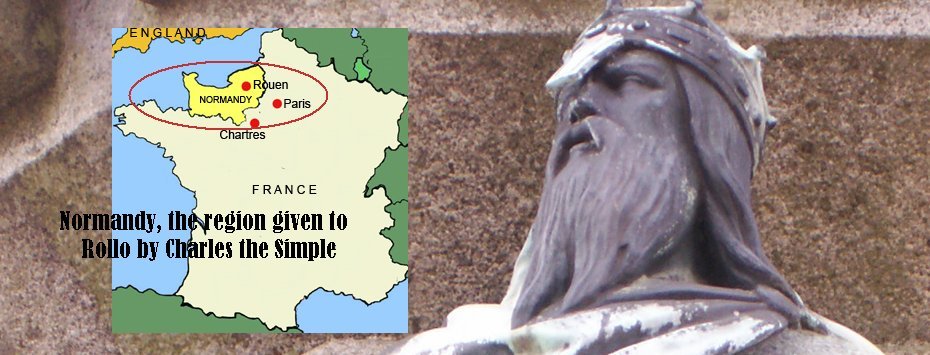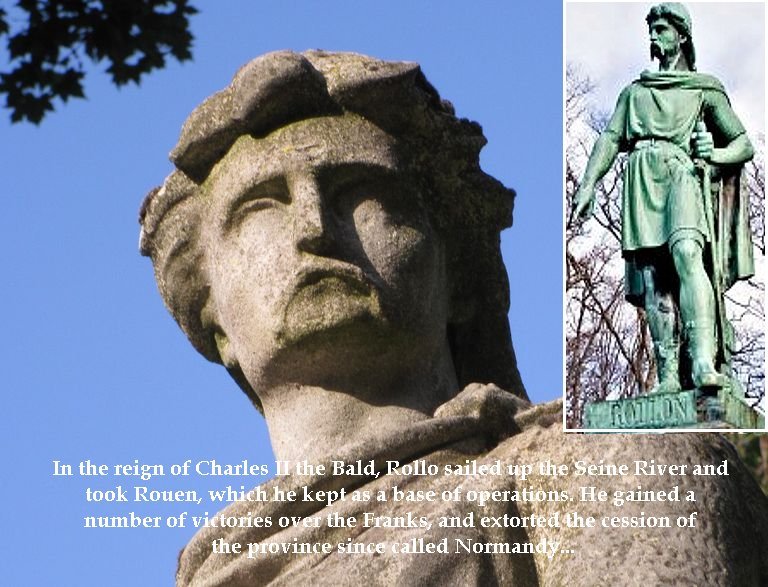Rollo: Viking Sea Lord, Chieftain, Lone Wolf And The First Ruler Of Normandy
A. Sutherland - AncientPages.com - At the height of their glory, the Vikings formed many new Scandinavian dynasties. At first, they were considered foreigners, but they eventually integrated with local communities, even religiously.
One of them was Rollo (also known as Gånge-Rolf), an ancestor of the famous William the Conqueror, who led the conquest of Normans to England and became king of the country in 1066.
Believed to have lived between 846 and 931 AD, the first historical account of Rollo detailed his leadership of the Vikings during their siege of Paris from 885 to 6 AD.
Mentioned in Icelandic sagas, as a man of high social status, Rollo is often referred to as Rolf the Walker ("Ganger-Hrolf, "in Old Danish) because he had such an imposing figure that his horse could not carry him and was obliged to travel on foot.
His impressive figure was richly decorated with golden arm rings, amulets, and the hammer of the god Thor. By a treaty in 911, the Viking chieftain, Rollo, and his followers were granted part of the French coast called Normandy (or the "land of the Normans"). In return, Rollo was to swear loyalty to King Charles the Simple, look to the defense of his domain, and be baptized as a Christian.
The Viking chieftain kept his bargain with the king, and the treaty was beneficial to them both. Rollo's presence in Normandy was legitimate; he settled in the city of Rouen, which he seized earlier, in 876, and there were no further Viking raids into Charles's territory and in times of emergency, Rollo sent his met-at-arms at Charles's disposal.
In his book "The Vikings," Robert Wernick mentions a local tradition that describes Rollo as a brutal man:
"…when some peasants sought the right to hunt and fish in Rollo's woods, lakes, and rivers, he dispatched his uncle, Count Rudolph, to cut off a hand and a foot of each of the would-be-poachers. But he was also sharp-witted and practical. He let himself be baptized, and he lost no time in restoring the churches that he and his fellow Vikings had sacked…"
Statue of Viking Rollo in Ålesund, Norway. Image credit: Nils Harald Ånstad.
"… It was later recounted that when he was on his deathbed, he asked to be buried in the cathedral of Rouen and he ordered large sums of gold to be given to Christian churches…"
He continued to reign over the region of Normandy until at least 928, according to a charter of 918. By the end of the century, these settlers spoke French and had lost their Scandinavian heritage.
Rollo was succeeded by his son, William Longsword (c. 893 -942), William, the second ruler of Normandy, from 927 until his assassination in 942. The offspring of Rollo and his followers became known as the Normans.
After the Norman conquest of England and their conquest of southern Italy and Sicily over the following two centuries, their descendants came to rule Norman England (the House of Normandy), the Kingdom of Sicily (the Kings of Sicily) as well as the Principality of Antioch from the 10th to 12th century, leaving behind a lasting legacy in the historical records of the European continent and even the countries of Near East.
Much Debate On Rollo's True Origin
Like most other figures dated to early history, also Rollo's roots are shrouded in mystery.
Medieval chronicles from Norway and Iceland assert that Rollo and another figure known as Gange-Rolv (also known as Rolv Ganger) were one and the same person. On the other hand, modern Danish historians do not agree with these claims and insist that Rollo was Danish.
In the spring of 2014, a report published by Michael R. Maglio stated that the DNA extracted from the remnants of Rollo’s descendants disclosed them to be of Danish origin. This theory was also criticized, and it was said that the researchers had misidentified corpses.
An 11th-century Benedictine monk and historian wrote: "Rollo sailed boldly from Norway with his fleet to the Christian coast." Likewise, the 12th-century English historian William of Malmesbury stated that Rollo was "born of noble lineage among the Norwegians."
Also, according to one legend, he was a Norwegian scion of a family that had left Norway as outlaws and arrived in northern Scotland to seek freedom and wealth. From there, he took part in many Viking raids, reaching the coast of England and France.
An entirely different account was given by a hisorian of early Norman history, Dudo of St. Quentin, born about 965, who claimed that Rollo and his brother, Gurim (or Gorm) were sons of an influential noble man in Dacia, a province covering the entire Nordic region (Dania and Suecia), which is the Medieval Latin names for Denmark and Sweden.
One of his great-grandsons was known as Robert the Dane.
Rollo's grave is at the Cathedral of Rouen. Image credit: Wikipedia
It is worth mentioning that Dudo’s version of events was partially echoed by the 12th century “Orkneyinga Saga, along with the Landnámabók ("Book of Settlements"). The latter is the medieval Icelandic written work that describes in considerable detail the settlement (landnám) of Iceland by the Norse in the 9th and 10th centuries CE.
Also, according to one legend, he was a Norwegian scion of a family that had left Norway as outlaws and arrived in northern Scotland to seek freedom and wealth. From there, he took part in many Viking raids, reaching the coast of England and France.
Among historians, Rollo - as the great-great-great-grandfather of William the Conqueror - is considered one of the ancestors of the present-day British royal family. He is also an ancestor of all current European monarchs.
Updated on December 6, 2023
Written by – A. Sutherland AncientPages.com Senior Staff Writer
Copyright © AncientPages.com All rights reserved. This material may not be published, broadcast, rewritten or redistributed in whole or part without the express written permission of AncientPages.com
Expand for referencesReferences:
More From Ancient Pages
-
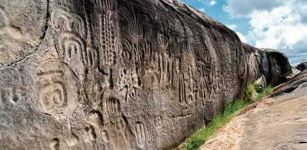 Unsolved Enigma Of The Inga Stone And Its Mysterious Ancient Undeciphered Signs
Artifacts | Jan 18, 2015
Unsolved Enigma Of The Inga Stone And Its Mysterious Ancient Undeciphered Signs
Artifacts | Jan 18, 2015 -
 Kap Dwa – Mysterious Two-Headed Mummified Patagonian Giant – Real Or Fake?
Featured Stories | May 20, 2021
Kap Dwa – Mysterious Two-Headed Mummified Patagonian Giant – Real Or Fake?
Featured Stories | May 20, 2021 -
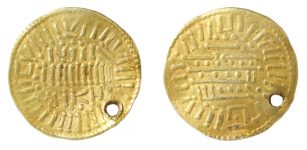 Vikings May Have Made Imitation Gold Dinar Found In Morston, Norfolk – Expert Says
Archaeology | Apr 5, 2023
Vikings May Have Made Imitation Gold Dinar Found In Morston, Norfolk – Expert Says
Archaeology | Apr 5, 2023 -
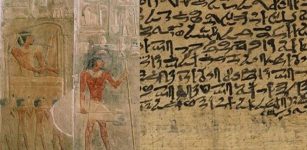 Secrets Of Maxims Of Ptahhotep – Ancient Egyptian Wisdom Is Still Relevant Today
Artifacts | Mar 10, 2018
Secrets Of Maxims Of Ptahhotep – Ancient Egyptian Wisdom Is Still Relevant Today
Artifacts | Mar 10, 2018 -
 Mysterious Valkyrie Eir Remains An Enigma In Norse Mythology
Featured Stories | Apr 4, 2018
Mysterious Valkyrie Eir Remains An Enigma In Norse Mythology
Featured Stories | Apr 4, 2018 -
 Daedalus And Icarus Who Forever Remained An Example For Many Dreamers
Featured Stories | Sep 11, 2023
Daedalus And Icarus Who Forever Remained An Example For Many Dreamers
Featured Stories | Sep 11, 2023 -
 Brahma: First God In Hindu Trimurti, Creator Of The World And All Creatures
Featured Stories | Apr 17, 2019
Brahma: First God In Hindu Trimurti, Creator Of The World And All Creatures
Featured Stories | Apr 17, 2019 -
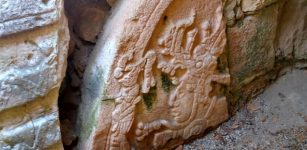 Dzibilchaltún: One Of The Most Ancient Mayan Centers In Northwest Yucatan, Mexico
Civilizations | Feb 2, 2016
Dzibilchaltún: One Of The Most Ancient Mayan Centers In Northwest Yucatan, Mexico
Civilizations | Feb 2, 2016 -
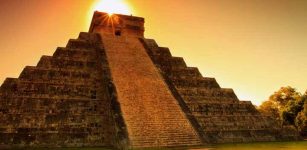 Impressive Pyramid Of Kukulkan (El Castillo’) At Chichen Itza
Civilizations | Feb 7, 2017
Impressive Pyramid Of Kukulkan (El Castillo’) At Chichen Itza
Civilizations | Feb 7, 2017 -
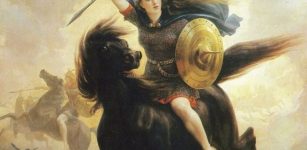 Mysterious And Powerful Valkyries In Norse Mythology: The Choosers Of The Slain
Featured Stories | Dec 1, 2015
Mysterious And Powerful Valkyries In Norse Mythology: The Choosers Of The Slain
Featured Stories | Dec 1, 2015 -
 Something Unexpected Stopped Mongol Hordes From Conquering Europe
Featured Stories | Jul 11, 2017
Something Unexpected Stopped Mongol Hordes From Conquering Europe
Featured Stories | Jul 11, 2017 -
 Ancient People Dressed Baby Boys In Blue To Ward Off Evil Spirits
Ancient History Facts | Mar 5, 2019
Ancient People Dressed Baby Boys In Blue To Ward Off Evil Spirits
Ancient History Facts | Mar 5, 2019 -
 Magnificent Hattusa: Capital Of The Hittite Empire
Civilizations | Apr 11, 2021
Magnificent Hattusa: Capital Of The Hittite Empire
Civilizations | Apr 11, 2021 -
 Frightening Edinburgh Vaults: The Spooky Underground City Of The Dead
Featured Stories | Jun 4, 2016
Frightening Edinburgh Vaults: The Spooky Underground City Of The Dead
Featured Stories | Jun 4, 2016 -
 Wadjet – Egyptian Goddess Protected Pharaohs And Was Depicted As A Cobra-Uraeus
Egyptian Mythology | May 29, 2021
Wadjet – Egyptian Goddess Protected Pharaohs And Was Depicted As A Cobra-Uraeus
Egyptian Mythology | May 29, 2021 -
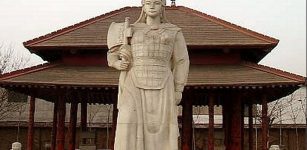 Lady Fu Hao: Brave Warrior Skilled Strategist And China’s First Female General
Featured Stories | Mar 9, 2019
Lady Fu Hao: Brave Warrior Skilled Strategist And China’s First Female General
Featured Stories | Mar 9, 2019 -
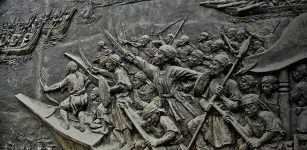 Lachit Bhorphukan: Hero From Assam Among Famous Warriors Who Stopped Mughals From Conquering Northeast India
Featured Stories | Dec 28, 2016
Lachit Bhorphukan: Hero From Assam Among Famous Warriors Who Stopped Mughals From Conquering Northeast India
Featured Stories | Dec 28, 2016 -
 Humans Got To America 7,000 Years Earlier Than Thought – New Research Confirms
Archaeology | Oct 9, 2023
Humans Got To America 7,000 Years Earlier Than Thought – New Research Confirms
Archaeology | Oct 9, 2023 -
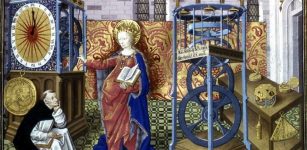 Minutes Did Not Exist During The Middle Ages
Ancient History Facts | Mar 2, 2016
Minutes Did Not Exist During The Middle Ages
Ancient History Facts | Mar 2, 2016 -
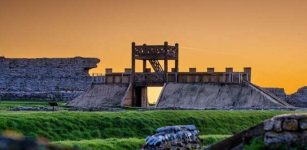 Reconstructed Roman Gateway Tells The Story Of Britain’s Invasion
Featured Stories | Aug 26, 2023
Reconstructed Roman Gateway Tells The Story Of Britain’s Invasion
Featured Stories | Aug 26, 2023

